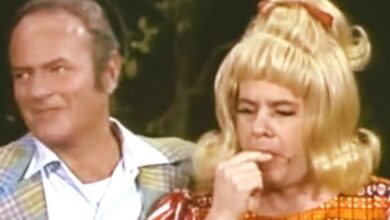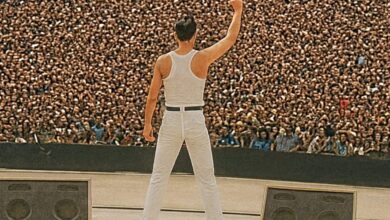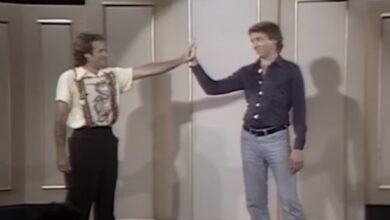Simon & Garfunkel’s ‘Mrs. Robinson’ Redefines Folk-Rock and Captures a Generation’s Voice in 1968
When “Mrs. Robinson” hit the airwaves in 1968, it didn’t just become a chart-topping hit—it became an anthem for a generation navigating rapid cultural upheaval. Originally released as part of the soundtrack for The Graduate, the song marked a major milestone in Simon & Garfunkel’s career. With its infectious melody and incisive lyrics, “Mrs. Robinson” soared to No. 1 on the Billboard Hot 100, becoming the first rock song to win the Grammy Award for Record of the Year in 1969. It wasn’t just popular—it was groundbreaking.
Paul Simon and Art Garfunkel had already built a reputation for lyrical depth and haunting vocal harmonies. Emerging from the Greenwich Village folk scene in the early 1960s, the duo offered something distinct: a poetic sensibility fused with mainstream appeal. Their previous hits, such as “The Sound of Silence” and “Homeward Bound,” had established them as voices of introspection and social commentary. But with “Mrs. Robinson,” their sound took on a sharper edge, and their reach expanded exponentially.
The genesis of the song is almost as iconic as the track itself. Director Mike Nichols approached the duo during the production of The Graduate, looking for a modern sound to match his film’s cynical tone. At the time, Paul Simon was reluctant and only had a sketch of a song referencing “Mrs. Roosevelt.” Nichols insisted they revise it for the film, and with some quick rewrites, “Mrs. Robinson” was born. The lyrics, cryptic yet evocative, served as both a commentary on suburban disillusionment and a sly nod to the film’s seductive character.
The recording process was handled with meticulous care. Produced by Simon, Garfunkel, and long-time collaborator Roy Halee, the song features an intricate blend of acoustic guitar rhythms, subtle electric textures, and layered vocal harmonies. Simon’s guitar work was crisp and driving, while Garfunkel’s voice soared over the top in seamless harmony. The track also featured a quirky, echoing refrain—“dee-de-dee-de-de-de-de”—that gave it a timeless and immediately recognizable signature.
Upon release, the single was met with immediate acclaim. It climbed to the top of the U.S. charts and stayed in the Top 40 for multiple weeks. The success of the song was bolstered by The Graduate, which became a major box office hit. Together, the song and the film created a cultural moment—where music and cinema fused into a defining statement about youth, rebellion, and existential uncertainty in post-war America.
Beyond its commercial success, “Mrs. Robinson” made an indelible mark on the music industry. It broke down the wall between folk and mainstream pop, proving that thoughtful, literate songwriting could still be commercially viable. Its place in a major Hollywood film also set a precedent for using pop music to frame and deepen cinematic narratives. The track’s casual reference to “Jesus” even stirred controversy, underscoring how Simon & Garfunkel weren’t afraid to challenge convention.
For Simon & Garfunkel, “Mrs. Robinson” signaled a turning point. It expanded their fanbase beyond college students and intellectuals to include a broader swath of American youth. The song’s success helped pave the way for their next ambitious project, the 1970 masterpiece Bridge Over Troubled Water. By then, they had become icons—thanks in large part to the exposure and acclaim generated by “Mrs. Robinson.”
The ripple effects of the song were felt throughout the music world. Artists across genres began incorporating more introspective and narrative-driven lyrics into their work. The folk-rock movement gained credibility and momentum, influencing musicians from Neil Young to Fleetwood Mac. Even later generations of indie and alternative artists have cited “Mrs. Robinson” as a blueprint for how to balance accessibility with artistry.
Numerous artists have taken on the song in cover versions. The Lemonheads offered a punk-infused rendition in 1992 that reintroduced the track to a younger audience. Frank Sinatra famously covered it—although he altered some of the lyrics to remove the religious references. Each version underscored the song’s adaptability and enduring relevance across different styles and eras.
At the time of its release, the social fabric of the U.S. was fraying—marked by anti-war protests, political assassinations, and a shifting moral compass. Against this backdrop, “Mrs. Robinson” captured the mood of a generation questioning the world around them. The ambiguity of the lyrics invited reflection, while its confident rhythm suggested resolve. It was a protest song in disguise—a mirror to a restless society.
Today, “Mrs. Robinson” continues to appear on classic rock and oldies playlists, revered for its craftsmanship and cultural weight. It consistently ranks on lists of the greatest songs of all time and remains one of Simon & Garfunkel’s most enduring contributions to music. Its opening chords alone are enough to stir memories in listeners across generations.
The song also shaped production approaches in pop music. Its layered sound, blending traditional folk instruments with subtle studio enhancements, would go on to influence countless recordings. It proved that clean, acoustic-driven songs could be as powerful as heavily orchestrated or rock-infused tracks, giving rise to a new standard in pop-folk production.
Following their eventual split in 1970, the song gained deeper poignancy. Though the duo reunited occasionally, “Mrs. Robinson” became a symbol of their peak, a moment when everything aligned—the culture, the sound, the message. It remains a highlight of their reunion concerts and is often the song that brings audiences to their feet.
More than five decades later, “Mrs. Robinson” still resonates because it asks questions without demanding answers. Its cultural relevance endures because it emerged at the perfect intersection of music and moment. It wasn’t just a hit—it was a lens through which listeners understood their world a little more clearly. In the ever-changing landscape of American music, it remains a defining landmark.





